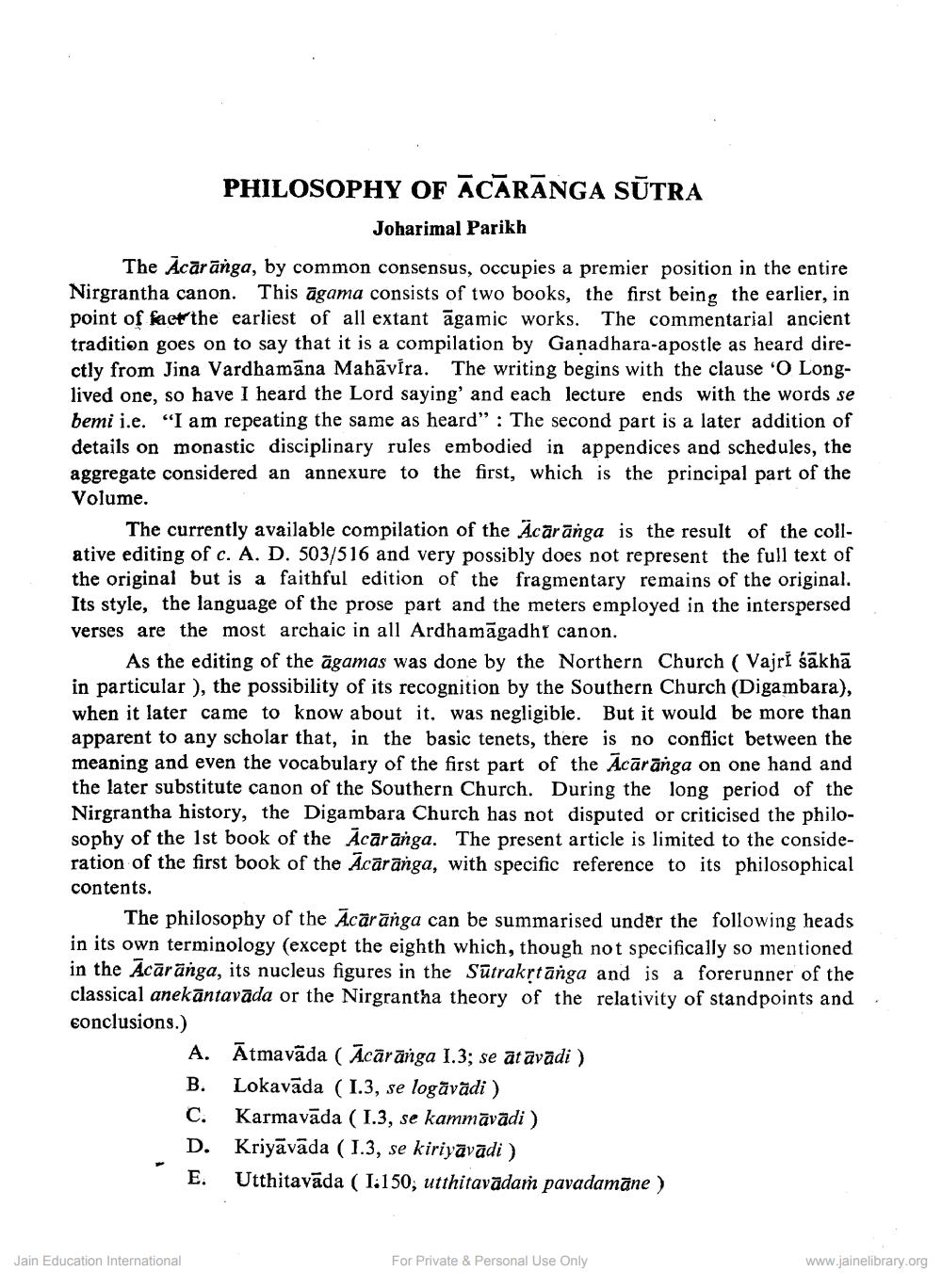Book Title: Philosophy of Acaranga Sutra Author(s): Joharimal Parikh Publisher: Z_Aspect_of_Jainology_Part_3_Pundit_Dalsukh_Malvaniya_012017.pdf View full book textPage 1
________________ PHILOSOPHY OF ĀCĀRĀNGA SŪTRA Joharimal Parikh The Acārānga, by common consensus, occupies a premier position in the entire Nirgrantha canon. This agama consists of two books, the first being the earlier, in point of kaet the earliest of all extant āgamic works. The commentarial ancient tradition goes on to say that it is a compilation by Ganadhara-apostle as heard directly from Jina Vardhamāna Mahāvíra. The writing begins with the clause 'O Longlived one, so have I heard the Lord saying' and each lecture ends with the words se bemi i.e. “I am repeating the same as heard”: The second part is a later addition of details on monastic disciplinary rules embodied in appendices and schedules, the aggregate considered an annexure to the first, which is the principal part of the Volume. The currently available compilation of the Acārānga is the result of the collative editing of c. A. D. 503/516 and very possibly does not represent the full text of the original but is a faithful edition of the fragmentary remains of the original. Its style, the language of the prose part and the meters employed in the interspersed verses are the most archaic in all Ardhamāgadhy canon. As the editing of the agamas was done by the Northern Church ( Vajri sākhā in particular ), the possibility of its recognition by the Southern Church (Digambara), when it later came to know about it, was negligible. But it would be more than apparent to any scholar that, in the basic tenets, there is no conflict between the meaning and even the vocabulary of the first part of the Acārānga on one hand and the later substitute canon of the Southern Church. During the long period of the Nirgrantha history, the Digambara Church has not disputed or criticised the philosophy of the 1st book of the Acārānga. The present article is limited to the consideration of the first book of the Acārānga, with specific reference to its philosophical contents. The philosophy of the Ācārānga can be summarised under the following heads in its own terminology (except the eighth which, though not specifically so mentioned in the Acāränga, its nucleus figures in the Sūtrakrtānga and is a forerunner of the classical anekāntavāda or the Nirgrantha theory of the relativity of standpoints and conclusions.) A. Ātmavāda ( Ācārānga 1.3; se atavādi ) Lokavāda (1.3, se logāvādi ) Karmavāda (1.3, se kammāvādi ) Kriyāvāda (1.3, se kiriyāvādi ) E. Utthitavāda ( 1.150; utthitavādam pavadamāne ) Jain Education International For Private & Personal Use Only www.jainelibrary.orgPage Navigation
1 2 3 4 5 6 7 8 9 10 11 12 13
